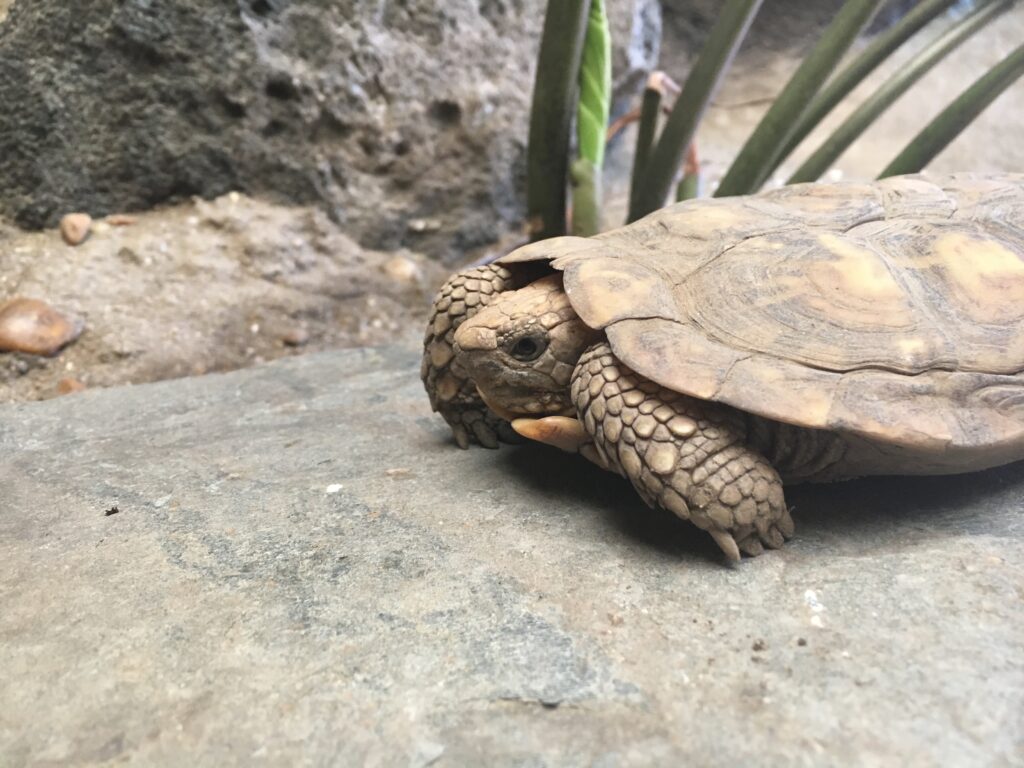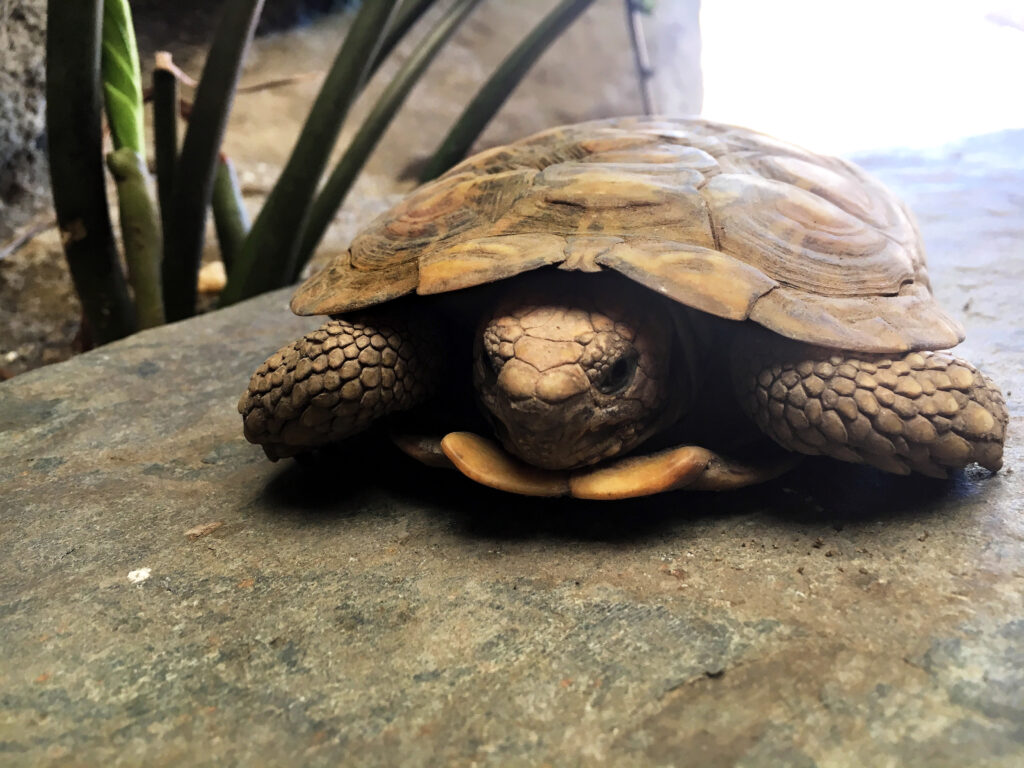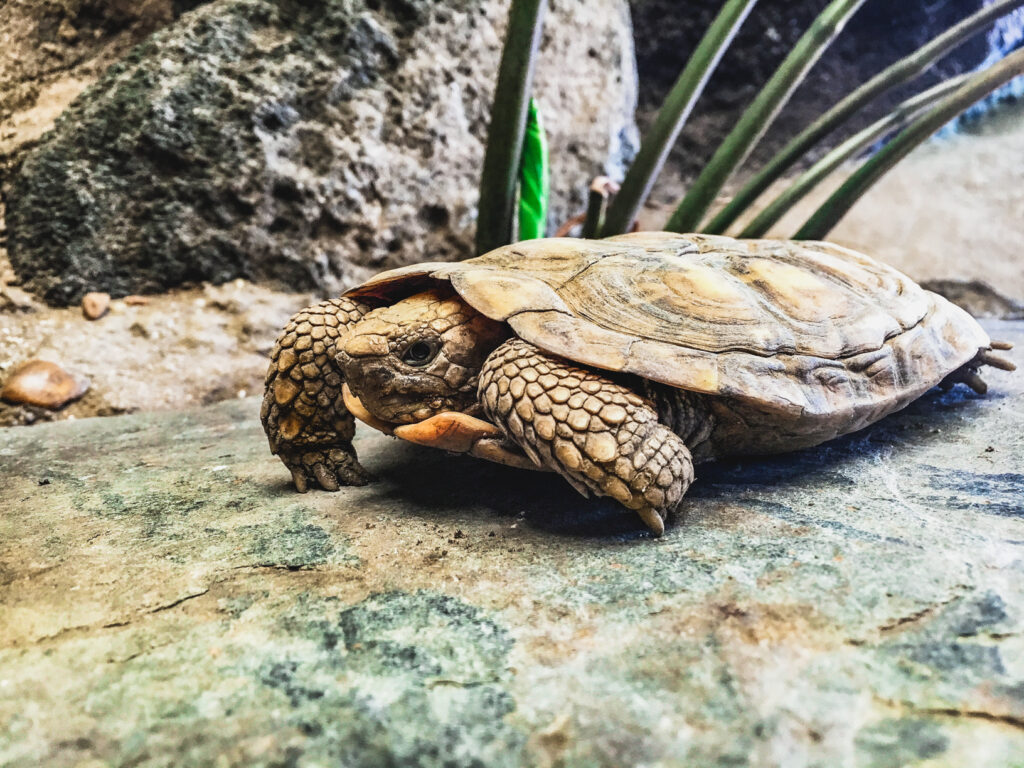The Fastest Tortoise
We’re likely all familiar with the story of the tortoise and the hare, and while the tale is vague on which species of tortoise the hare challenged a race with, we’re placing bets that the best choice of tortoise needed to win a speed-related race would be the fastest in the world – and also the species whose name sounds the tastiest – the pancake tortoise!

So how did this speedster earn its food-related name? For starters, the tan-colored shell of this smaller species of tortoise is very flat, thin and flexible, like a pancake! There are also several small holes in the shell, making the tortoise lightweight, agile and therefore fast. Whereas most turtle and tortoise species use their shell for protection, pancake tortoises are known for fleeing from danger, often sprinting toward safety under narrow rock crevices that many other animals do not have access to.
A typical habitat for pancake tortoises ranges from scrublands to rocky areas in East Africa, including countries such as Kenya, northern and eastern Tanzania, and a population that has been introduced in Zimbabwe. These tortoises feast on dry grasses and other similar vegetation, and often take advantage of fallen fruit and succulents like aloe.

Even the speediest species of tortoise can’t outrun extinction, with the species’ population drastically decreasing due to habitat destruction and capture for the illegal exotic pet trade. Agricultural development, use of land for cattle and goats and overgrazing by the hoofstock, as well as juveniles being harvested for the pet trade due to the species’ unique adaptions have led to the species being listed as Critically Endangered by the International Union for Conservation of Nature (IUCN) Red List of Endangered Species.
Protective measures have been taken to save this species from becoming extinct. In 1981, Kenya banned the export of pancake tortoises without written permission from the Minister for the Environment and Natural Resources. Zoos and other institutions around the world have also established breeding programs to ensure the regrowth and stability of future populations. The Virginia Zoo participates in a Species Survival Plan ® (SSP) for pancake tortoises. This program is run by the Association for Zoos and Aquariums (AZA), and oversees and manages species’ population in zoos by pairing individuals and monitoring breeding to maximize genetic diversity and long-term sustainability of populations. The SSP also ensures the species’ survival in the wild through supporting conservation efforts such as programs that protect or restore habitats.

The Virginia Zoo currently has four pancake turtles, two of which live behind-the-scenes as program animal ambassadors and two that live on exhibit in the Africa – Okavango Delta. All four tortoises measure between seven and eight inches in length and weigh 420 – 580 grams each. The tortoises are fairly shy and prefer to spend their time hiding under rock stacks that are as tight as possible for them to fit into. Besides playing hide and seek with their Keepers, the Zoo’s pancake tortoises are very fond of eating leafy greens, but are also fed a diet of mixed vegetables three times a week.
Have you ever seen the Zoo’s pancake tortoises come out of hiding? Have you seen their lightning tortoise speed? Let us know by sharing and tagging us on social media using #virginiazoo!